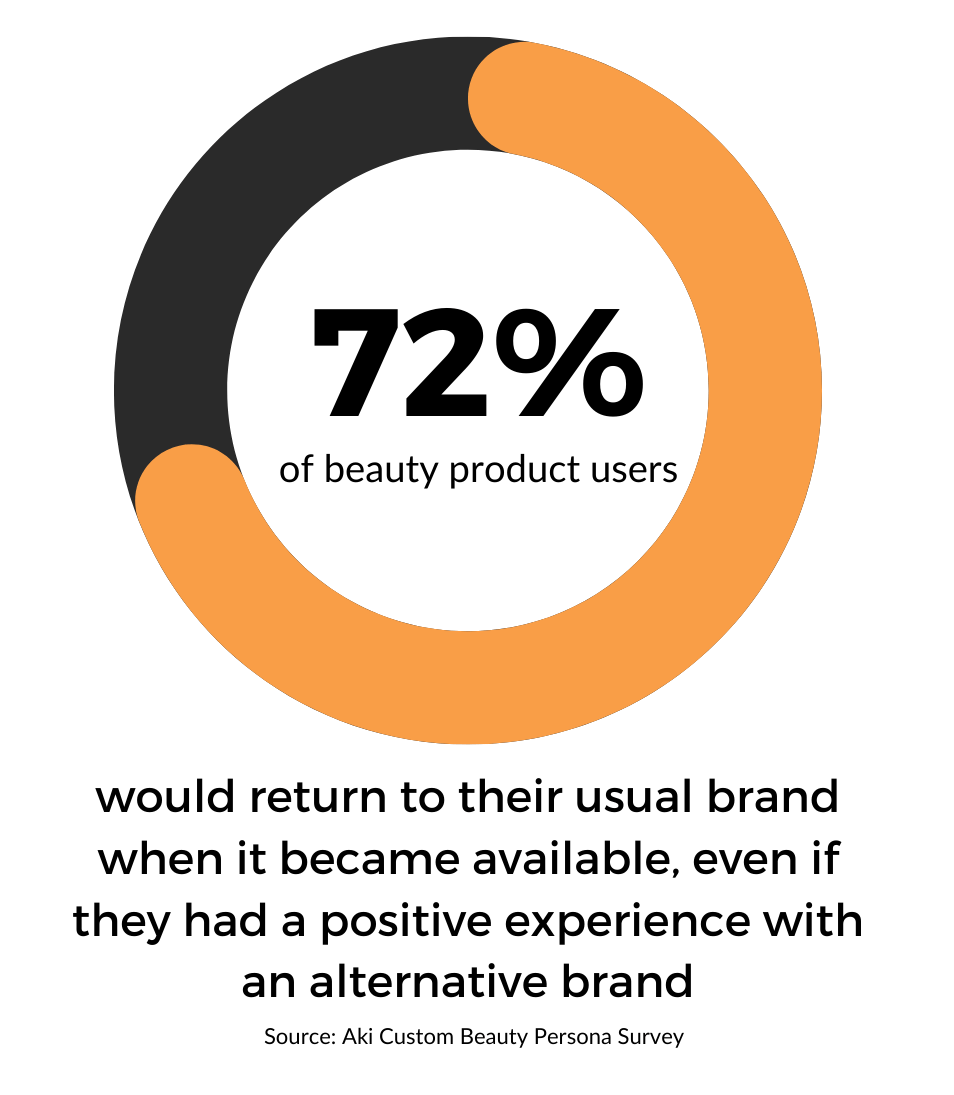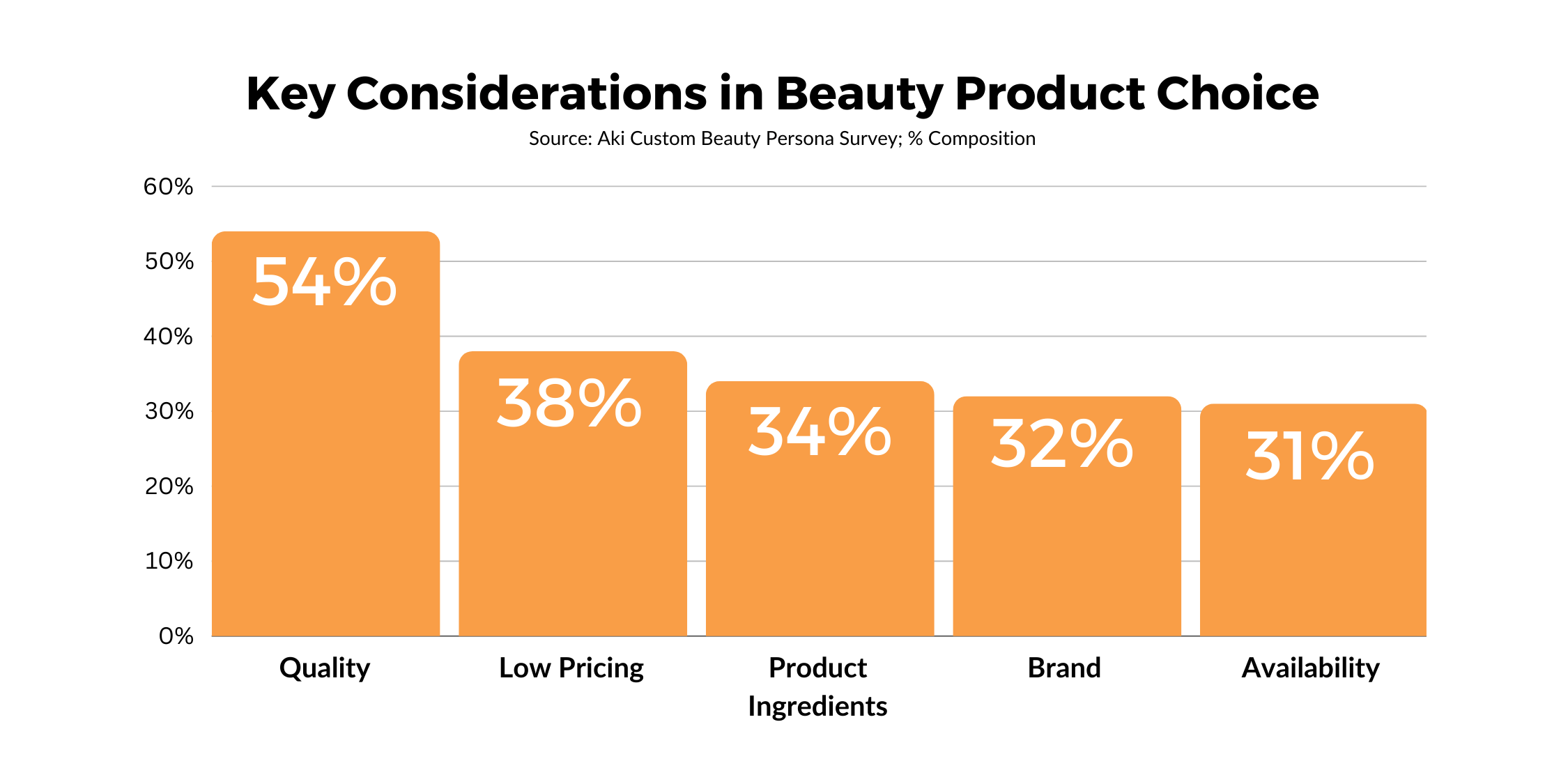My skincare routine may be bare bones (face wash & moisturizer with SPF), but even I can appreciate the allure of falling in love with a new product that promises better results for less money. In today’s fiercely competitive beauty industry, attracting new customers and retaining their loyalty is vital for success, but incredibly difficult to sustain.
Motivated by the “why”, we ran a custom survey on this topic and found that by understanding consumer behavior and preferences, brands that leverage strategically placed personalized messaging and promotions are better set up to maintain favorability and build long-term relationships with their current & prospective customers.
Below are 5 steps to driving trial and loyalty in the beauty industry.
#1. Understand Consumer Behavior
Beauty product users exhibit a high degree of brand loyalty – the Aki Custom Beauty Persona survey reveals that 72% of consumers would return to their usual brand even after a positive experience with an alternative. However, several factors influence their decision-making process when considering alternatives. These include availability, dissatisfaction, price, ingredients, and trusted reviews from friends and family.

#2. Harness the Power of Promotional Messaging
Despite their loyalty, 40% of beauty product users are willing to change their usual brand if presented with a special offer on a new brand. This indicates that consumer behavior is closely linked to price. Brands should seize this opportunity by offering promotions or discounts on new products, enticing customers to try something different.
#3. Understand the Key Considerations in Product Choice
Quality remains the top consideration for beauty product users (54%), followed by low pricing (38%), product ingredients (34%), brand (32%), and availability (31%). To attract those open to trying new products, brands should focus on promotions or discounts (44%), recommendations from friends or family (43%), or unique ingredient benefits (37%).

Quality remains the top consideration for beauty product users (54%), followed by low pricing (38%), product ingredients (34%), brand (32%), and availability (31%). To attract those open to trying new products, brands should focus on promotions or discounts (44%), recommendations from friends or family (43%), or unique ingredient benefits (37%).
#4. Retain Brand Trust
To maintain favorability and loyalty among consumers looking for alternatives due to dissatisfaction, brands should address common concerns such as a decrease in quality/effectiveness (70%), product discontinuation (55%), or unexpected price increases (53%). By offering discounts or promotions that offset price increases, brands can retain trust and ensure continued loyalty.
#5. Re-engage Trial Users
After trying and finding a new beauty product effective, consumers are likely to seek deals/promotions (39%), purchase larger sizes (30%), or compare it to previous products (29%). Brands can capitalize on these behaviors by providing personalized messaging that focuses on affordability, value, and continued brand trial.
In a highly competitive market, beauty brands can drive product trial and eventual loyalty through carefully coordinated advertising efforts. By leveraging promotional messaging and personalization, brands have the opportunity to entice new users to try their products and maintain favorability among loyal customers. Understanding consumer preferences and addressing common concerns are key elements in creating successful advertising campaigns that foster brand trust and long-term relationships with customers.
Download this case study to learn how Jergen’s educated consumers on the value of its products with Aki’s social solution, or contact us for a personalized recommendation for your brand.
Rachel Gropper, Sr. Manager of Market Insights & Strategy
